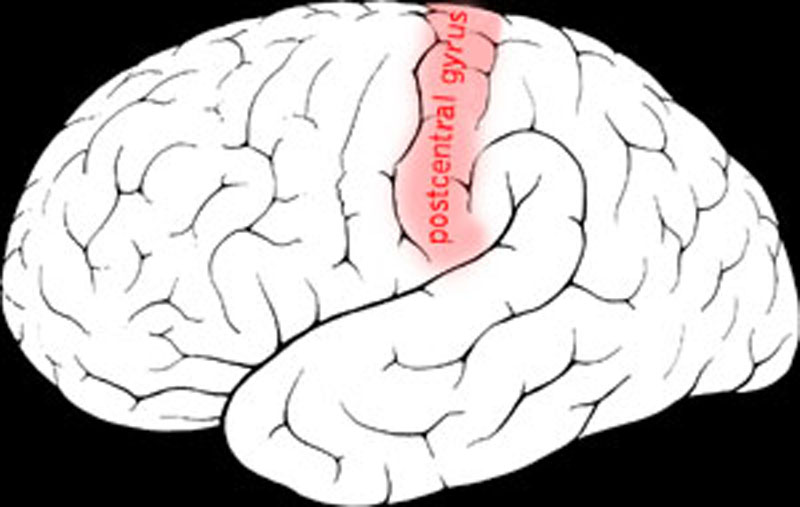Somatosensation
- The somatosensory system is made up of thermoreceptors, photoreceptors, mechanoreceptors and chemoreceptors comprising various sensory modalities including proprioception, mechanoreception (touch), thermoception (temperature), and nociception (pain).
- A mechanoreceptor is a sensory receptor that responds to mechanical pressure or distortion. Normally there are four main types in glabrous skin: Pacinian corpuscles, Meissner's corpuscles, Merkel's discs, and Ruffini endings.
- Meissner's corpuscles are the type of mechanoreceptor responsible for sensitivity to light touch.
- A Ruffini corpuscle is a slowly adapting mechanoreceptor found in the subcutaneous tissue of humans. It is one of the receptors responsible for mechanoreception.
- Merkel's discs are mechanoreceptors found in the basal epidermis and hair follicles. They are large, myelinated nerve endings, providing information on pressure, position, and deep static touch features such as shapes and edges.
- Pacinian corpuscles, are one of the four major types of mechanoreceptor. They are nerve endings in the skin responsible for sensitivity to vibration and pressure. They respond only to sudden disturbances and are especially sensitive to vibration.
- A nociceptor is a sensory neuron (nerve cell) that responds to potentially damaging stimuli by sending signals to the spinal cord and brain. This process usually causes the perception of pain.
- A free nerve ending is an unspecialized, afferent nerve ending, meaning it brings information from the body's periphery toward the brain. They function as cutaneous receptors and are essentially used by vertebrates to detect pain.
- The lateral postcentral gyrus is a prominent structure in the parietal lobe of the human brain. It is the location of the primary somatosensory cortex, the main sensory receptive area for the sense of touch.
- Two-point discrimination is the ability to discern that two nearby objects touching the skin are truly two distinct points, not one. It is often tested with two sharp points during a neurological examination and reflects how finely innervated an area of skin is.
- The gate control theory of pain asserts that non-painful input closes the gates to painful input, which prevents pain sensation from traveling to the central nervous system. Therefore, stimulation by non-noxious input is able to suppress pain.
- The withdrawal reflex is a spinal reflex intended to protect the body from damaging stimuli. It is polysynaptic, causing stimulation of sensory, association, and motor neurons.
- Phantom pain sensations are described as perceptions that an individual experiences relating to a limb or an organ that is not physically part of the body.


